LAB REPORT
Science and Technology Making Headlines
Jan. 26, 2024

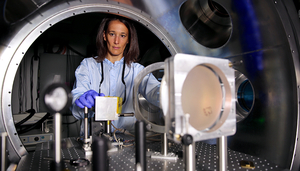
Jupiter Laser Facility Director Félicie Albert checks instruments inside one of the lasers in the Jupiter Laser Facility.
A passion for lasers
In addition to her responsibilities as the director of the Jupiter Laser Facility at Lawrence Livermore National Laboratory, Félicie Albert is also passionate about ensuring that scientists have access to lasers. She’s a former chair and current member of LaserNetUS, a project designed to give scientists the opportunity to conduct experiments at a network of high-intensity laser facilities across the United States.
The mission of LaserNetUS is to provide access to the brightest lights to any researcher who doesn’t have access. It’s a way for people who do not have the opportunity to do experiments or do not have a laser facility at their home institution to get access to high-intensity laser light.
Albert stresses that providing access to researchers and students is critically important.
“First and foremost, it advances high-power laser science by supporting cutting-edge research” she said. “And we enable a diversity of ideas and backgrounds. If I just do research at my own facility, the ideas will be very limited. So it’s really great to have a broad background of scientists and communities coming together to fulfill their ideas.
“It also helps develop the next-generation workforce for the field. It provides students and early-career researchers access to unique facilities and technologies that they wouldn’t have otherwise, and that helps them advance their careers.”
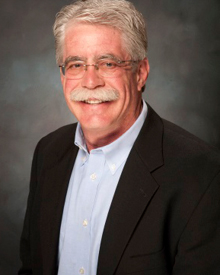
Roger Aines is LLNL’s Energy Program chief scientist and senior adviser for carbon dioxide removal at the DOE Office of the Under Secretary for Energy and Innovation.
Capturing carbon could slow climate change
Climate change is already significantly impacting California’s water system — and those effects will only worsen in the coming years. Reducing greenhouse gas emissions is essential, and California is set to play a major role in those efforts.
In November, the nation’s first direct air capture (DAC) facility opened in Tracy, California. But what is direct air capture, and how does it fit into the state’s emissions reduction strategy? Turn to Roger Aines, who leads the Carbon Initiative at Lawrence Livermore National Labs, to tell more.
“There’s too much carbon dioxide in the atmosphere,” he said. “We need to stop putting carbon dioxide into the atmosphere, but that alone won’t fix the fact that there’s already too much there. We’ve developed technologies to remove some of that carbon dioxide, and the simplest of those is called ‘direct air capture."
The Department of Energy has worked on this for a long time, and they’ve put 14 million tons of CO2 underground in experimental programs. Aines said: "We’re confident that we can do it safely.”

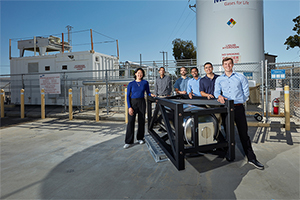
LLNL and Verne representatives with Verne's CcH2 storage system.
Come fly with me
ZeroAvia is working with San Francisco startup Verne to bring an even more energy-dense form of hydrogen to the clean aviation space. Cryo-compressed H2 could reduce costs, speed up fueling and unlock 40% more flight range than cryogenic liquid H2.
Hydrogen is hard to store and transport, requiring either ultra-cold temperatures, or energy-hungry compression to get it into a useful volume. It's energy-inefficient to make, and there’s no distribution network for it per se.
But if you want to decarbonize aviation, it’s one of your only real fuel options. It might not carry as much energy as jet fuel, but it gives you a huge energy density boost as compared with lithium batteries.
Now, ZeroAvia is looking to bring a third form of hydrogen fuel into the conversation, capable of carrying even more energy.
The idea of cryo-compressed hydrogen (CcH2) has been around for more than 25 years. It was first proposed as a high-density energy medium by Salvador Aceves at Lawrence Livermore National Laboratory, BMW created prototypes of a CcH2 system for passenger cars more than 10 years ago and Cryomotive is one of a number of companies now looking to bring its benefits to long-haul trucking, promising the range and quick fueling time of diesel in a zero-emissions fuel that stores more than 3,000 Wh/kg.

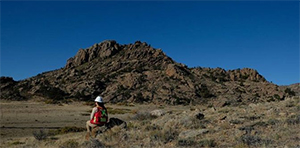
American Rare Earths has reported favorable results from its drill program at the Overton Mountain area in the Halleck Creek rare earths project located in Wyoming. The company is using technology developed by LLNL to purify rare earths. Photo courtesy of American Rare Earths.
A rare find
American Rare Earths, in collaboration with Lawrence Livermore National Laboratory, have made a breakthrough in metallurgical research.
The collaboration is part of a program funded by the Environmental Microbes as a BioEngineering Resource (EMBER) program within Defense Advanced Research Projects Agency. The project has been selected to advance to the next phase of study.
“Our protein-based rare earth separation technologies continue to be advanced and are greatly enhanced by this conventional technique that will improve the economic viability,” said LLNL scientist Yongqin Jiao, principal investigator for the project. “These findings contribute significantly to refining our approach and enhancing the efficiency of the rare earth element extraction process.”

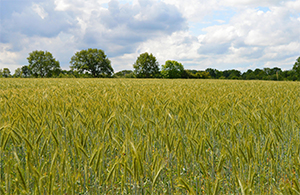
Cover cropping has a relatively high potential contribution to national soil-based CO2-removal efforts, due mainly to the large extent of land area that can be cover-cropped without interfering with cash-crop production. Cereal rye is by far the most widely planted cover crop currently in the United States.
Peering into carbon removal
"Roads to Removal" is the latest brainchild of the Department of Energy and Lawrence Livermore National Laboratory — and it’s unlike any report you’ve read before. County by county, researchers give an exhaustive analysis of the potential for carbon removal throughout all 50 U.S. states.
This study is anchored in regional economic and capacity information addressing carbon removal pathways like biomass with carbon removal and storage (BiCRS) and direct air capture (DAC). Critically, it’s not a prescriptive policy agenda; rather, it uses the latest data to outline a wealth of opportunities. By pinpointing the best locations for removal, this report can support decision-making by advocates and policymakers to choose the projects that will most benefit local communities and the climate.
Reports like this one unlock new possibilities and shape the future of the carbon removal industry. Credible and detailed reports of carbon removal potential lend confidence to investors, inspire innovators to stand up new companies in new places and provide clear reference points for communities and policymakers in choosing between different futures.





